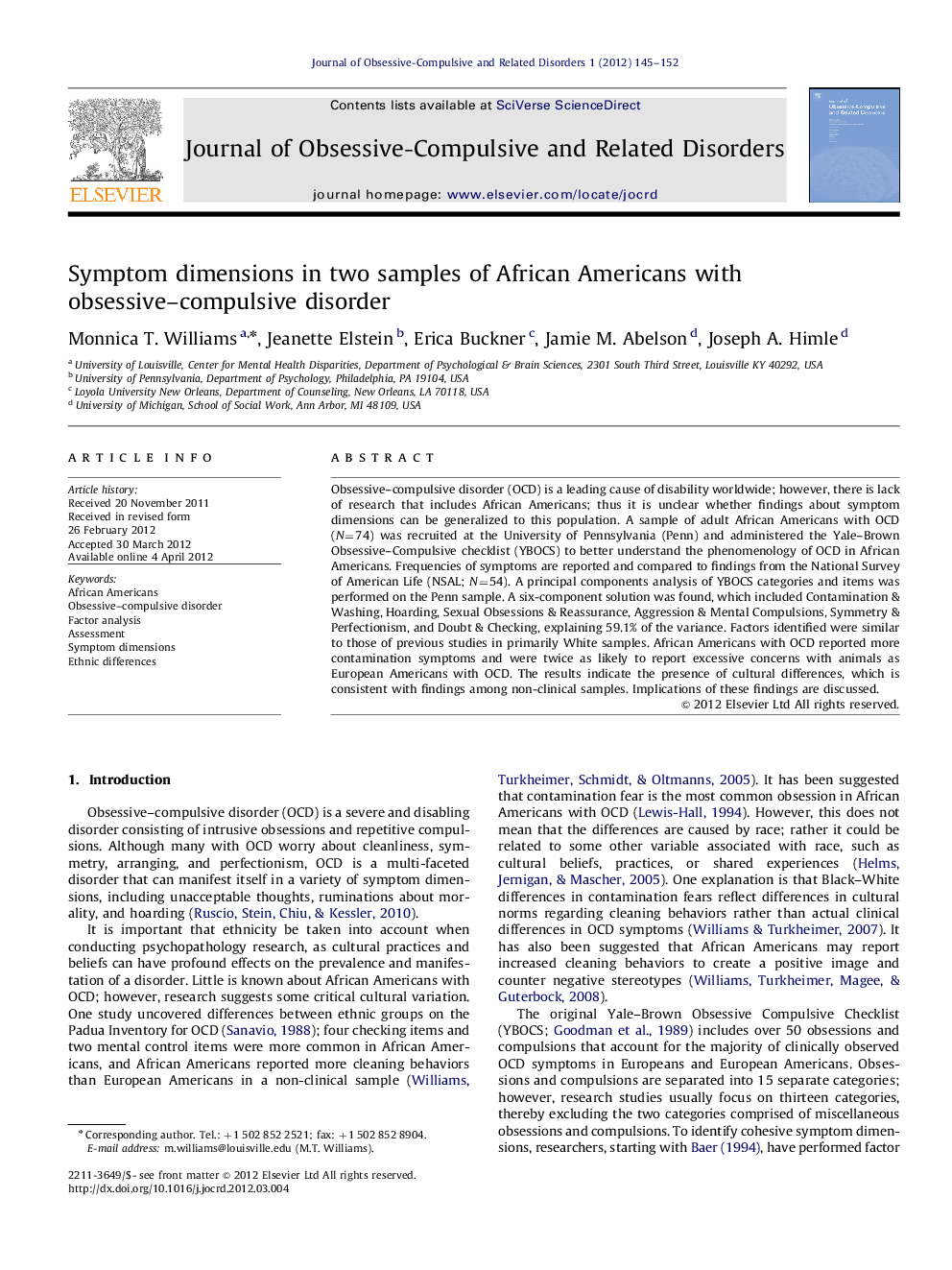| Article ID | Journal | Published Year | Pages | File Type |
|---|---|---|---|---|
| 912341 | Journal of Obsessive-Compulsive and Related Disorders | 2012 | 8 Pages |
Obsessive–compulsive disorder (OCD) is a leading cause of disability worldwide; however, there is lack of research that includes African Americans; thus it is unclear whether findings about symptom dimensions can be generalized to this population. A sample of adult African Americans with OCD (N=74) was recruited at the University of Pennsylvania (Penn) and administered the Yale–Brown Obsessive–Compulsive checklist (YBOCS) to better understand the phenomenology of OCD in African Americans. Frequencies of symptoms are reported and compared to findings from the National Survey of American Life (NSAL; N=54). A principal components analysis of YBOCS categories and items was performed on the Penn sample. A six-component solution was found, which included Contamination & Washing, Hoarding, Sexual Obsessions & Reassurance, Aggression & Mental Compulsions, Symmetry & Perfectionism, and Doubt & Checking, explaining 59.1% of the variance. Factors identified were similar to those of previous studies in primarily White samples. African Americans with OCD reported more contamination symptoms and were twice as likely to report excessive concerns with animals as European Americans with OCD. The results indicate the presence of cultural differences, which is consistent with findings among non-clinical samples. Implications of these findings are discussed.
► One group of African Americans with OCD was assessed with the YBOCS (N=74). ► A second group was assessed via National Survey of American Life (N=54). ► African Americans report higher rates of contamination symptoms than White samples. ► A PCA of the YBOCS found a six-factor solution, explaining 59.1% of the variance. ► Symptom dimensions are similar to those founds in previous studies.
